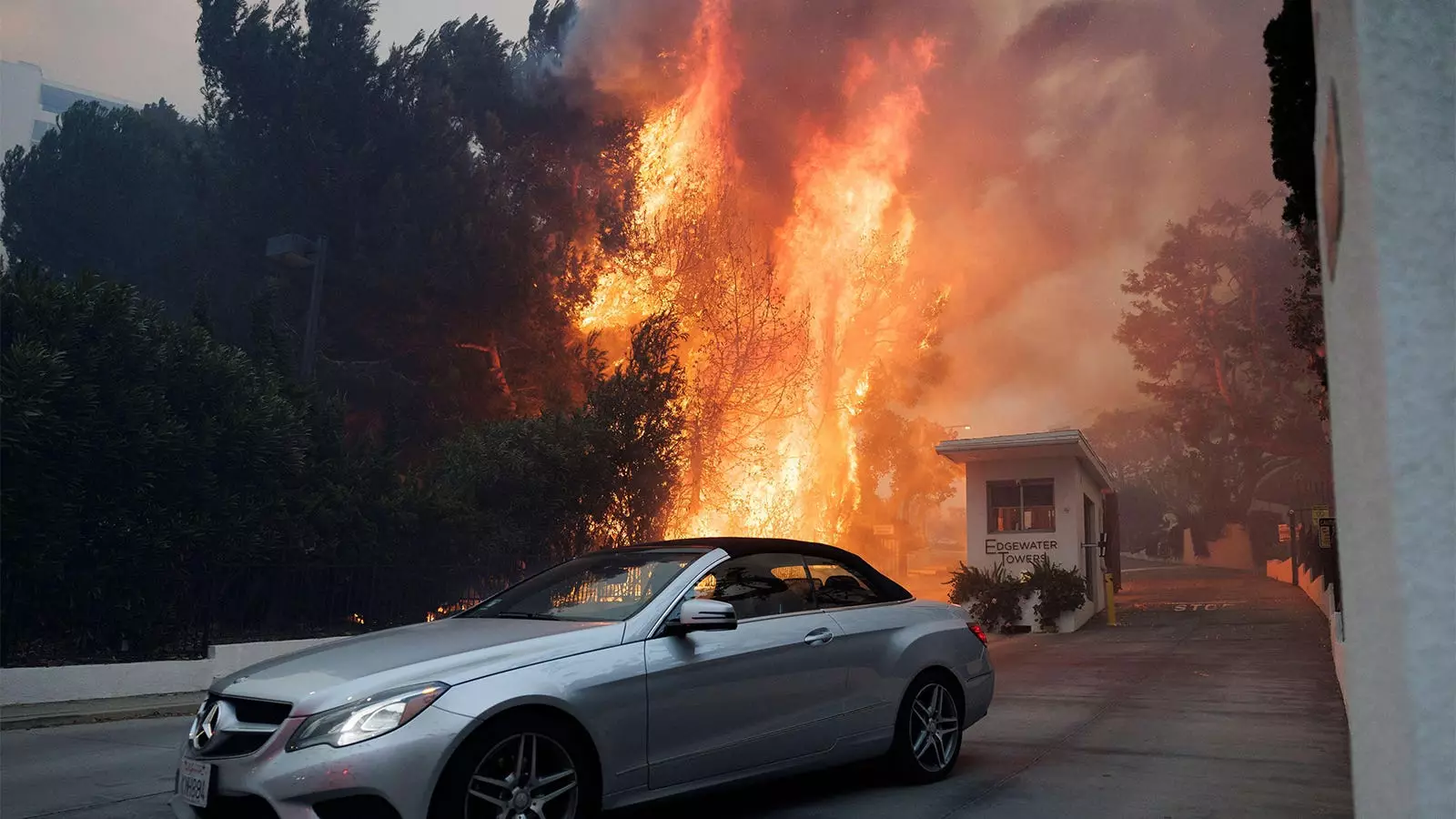On a typical Friday night, the 405 Freeway in Los Angeles is synonymous with bumper-to-bumper traffic, a rite of passage for the city’s denizens. However, as I drove northward recently, an unsettling emptiness enveloped the roadway. Above, the heavens were painted with surreal formations of smoke, the aftermath of the Palisades fire. These bizarre, Dali-esque shapes twisted through the sky, reflecting the chaos below—a stark reminder of our vulnerability against nature’s wrath. As I passed through the Sepulveda Pass, a veil of ash descended upon my vehicle, transforming the air thick with particulates that felt palpable and ominous.
The soundscape around me was marked by the distant thrum of helicopters and military aircraft, their rhythmic propellers serving as a metronome to a city on the brink of an environmental disaster. Crossing into the San Fernando Valley via the 101 Freeway, I was confronted by a haunting vision—flames cascading down hillsides, exuding what resembled a volcanic eruption of flames and smoke. This was not just another wildfire; it was an eerie manifestation of broader ecological crises unfolding uniquely in our urban landscape.
Unlike prior disasters, this current wildfire episode has crested a new wave of danger as it lashes against the urban-wildland interface. The fire’s destructive forces extend beyond the immediate threat to homes and businesses; they introduce unprecedented levels of harmful chemicals into the air. From PM2.5 particulates to toxic byproducts derived from burning plastics and man-made structures, the very air we breathe is now fraught with peril.
As first responders race into the chaos, they encounter severe inhalational risks, exacerbated by inconsistent use of personal protective equipment. An alarming number of individuals are seeking emergency medical attention, revealing the human cost of the current environmental crisis. This scenario raises valid concerns regarding the long-term health consequences that survivors will likely face—chronic respiratory issues, heightened cancer risks, and psychological scars that may linger for years.
The psychological repercussions compound the already burdensome physical effects. Survivors—be it children or the elderly—will find themselves grappling with mental health challenges post-recovery. Anxiety and post-traumatic stress disorder are likely outcomes for individuals who have been uprooted from their homes, facing uncertainties that threaten their sense of security. In this context, we must recognize the fire’s aftermath is a two-sided coin: physical destruction accompanied by a debilitating social and emotional toll.
As we navigate the complexities of this crisis, the specialized role of occupational and environmental medicine becomes paramount. These professionals have the expertise required to understand the multifaceted impacts of environmental hazards on public health, particularly amidst disasters. We stand at a crossroads where comprehensive strategies can be developed to not only address immediate health concerns but also prepare for future climate-related catastrophes.
Moving Towards Preparedness and Resilience
The lessons learned from past crises—whether they stemmed from the aftermath of 9/11 or the ongoing COVID-19 pandemic—are invaluable. Specifically, the establishment of structured medical surveillance programs for first responders is critical to maintaining workforce health in emergency situations. Now, as we confront another environmental challenge, we must prioritize real-time environmental monitoring systems that consolidate data about air quality, pollutant levels, and healthcare resources into user-friendly platforms.
To confront the escalating hazards posed by wildfires and other environmental crises, we need to adapt our health infrastructures. This entails forging partnerships with innovative sectors—leveraging technology to create advanced monitoring tools and personalized health guidance systems that cater to community needs in real time. The overarching goal is to ensure that our cities not only endure but evolve in resilience.
A Demand for More Trained Professionals
Yet, a significant gap in our strategy remains—a shortage of qualified occupational and environmental medicine physicians. Statistics reveal a dramatic decline in accredited residency programs over the years, leaving us ill-prepared to tackle the unfolding health challenges brought on by environmental disasters. Investing in medical education and training for these critical fields is not merely a necessity but an imperative as we confront the tumultuous tides of climate change.
The road ahead demands our unwavering commitment to fostering a resilient society capable of confronting environmental shifts with determination and innovation. Los Angeles can set a powerful precedent, demonstrating the potential for rebuilding not just its physical landscape but also its public health infrastructure amidst adversity.
Despite the ashen skies above, the vision for a healthier and more resilient future remains unwavering. The streets of Los Angeles and cities worldwide are ripe with opportunity for environmental innovation, adaptation, and proactive management of health in the face of adversity. As occupational and environmental medicine experts mobilize to provide immediate care and develop preventive protocols, we must aim to create hope out of desperation—ensuring that humanity’s ingenuity shines brightest amid ecological turmoil. The world may be confronting unprecedented challenges, but with concerted action, we can emerge stronger, paving the way for future generations to thrive harmoniously within their environments.

